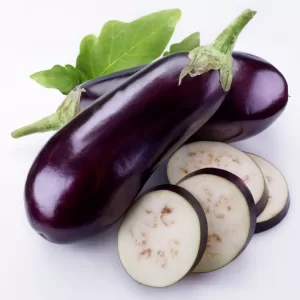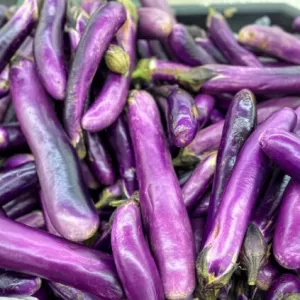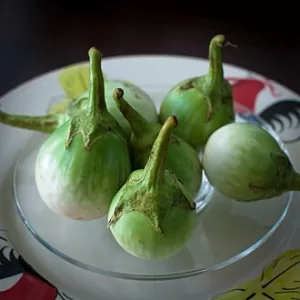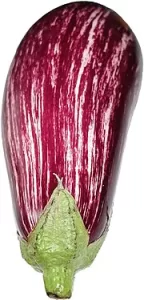The Versatile World of Eggplant: A Culinary Journey
Journey to the World of Eggplant
Introduction
Discover the fascinating history and endless variations of eggplant, a versatile ingredient that has conquered kitchens around the world. In this comprehensive guide, we will explore how this peculiar fruit, also known as aubergine or melanzana in different cultures, has been a staple in global cuisine and how you can use it to enrich your gastronomy.
History
Eggplant, belonging to the nightshade family, originated in India, where it is still found in its wild state. This plant was domesticated in the region over 4,000 years ago, gradually expanding to China and later to the Middle East during the Middle Ages. Eggplant was introduced to Europe by the Arabs in the 7th century, and despite its tumultuous start – where it was associated with legends of insanity – it soon became a cherished ingredient, especially in Mediterranean cuisine.
Possible Variations
The variations of eggplant are as rich as its history. With different sizes, shapes, and colors, each type has distinct nuances of flavor. Some of the most known include:
Italian eggplant, with its elongated shape and deep violet color

Eggplant is a central ingredient in Italian cuisine, where it is known as “melanzana”. Its use is diverse and spans several traditional regional recipes. One of the most notable characteristics of Italian cuisine is the ability to enhance the flavor of simple ingredients, and eggplant is no exception. Here are some of the most emblematic uses of eggplant in Italy:
Parmigiana di Melanzane: Perhaps the most famous eggplant dish, parmigiana is a combination of slices of breaded fried eggplant layered with tomato sauce, mozzarella cheese, parmesan, and in some recipes, ham or boiled eggs. It is baked until the flavors meld into a delicious layer of textures and tastes.
Caponata: Originating from Sicily, caponata is a sweet and sour dish made with cubed eggplant and cooked with other vegetables such as tomatoes, onions, olives, capers, and celery. Seasoned with vinegar and sugar, caponata is often served as an antipasto (starter) or as a side dish.
Pasta alla Norma: This classic pasta dish also comes from Sicily and is named after the opera “Norma” by composer Vincenzo Bellini. The recipe includes pasta (usually penne or rigatoni) served with a rich tomato sauce, fried eggplant, grated ricotta salata, and fresh basil.
Rolattini di Melanzane: These are eggplant rolls stuffed with different types of cheeses, ham, and even fish, then baked in the oven or grilled. The filling varies according to the region and personal preference.
Melanzane al Forno: Baked eggplant in the oven with a variety of seasonings, olive oil, and often topped with cheese and/or tomato sauce. It can be served as a main dish or as a side dish.
Antipasti: Eggplant is often prepared as part of a mixed antipasto, where it can be marinated, grilled, or prepared in other ways to be served cold.
Sott’olio: Eggplant preserves in oil are common, where the eggplants are pickled with vinegar and then submerged in oil with herbs and spices, creating a lasting condiment or snack.
Eggplant in Italy is celebrated not only for its versatility but also for its flavor and ability to absorb and complement the flavors of other ingredients. It is a vegetable that is present on Italian tables throughout the year, especially in summer, when it is in season and at the peak of its flavor.
Chinese eggplant, thinner and milder

Chinese eggplant, known as “qiezi” (茄子), is a popular variety of eggplant widely used in Chinese cuisine. Unlike the common Western eggplant, Chinese eggplants are usually longer and thinner, with a skin that ranges from bright purple to a paler purple with white stripes.
Chinese eggplant has a softer texture and a thinner skin than its Western counterparts, making it particularly suitable for a variety of cooking methods. Here are some characteristic uses of eggplant in Chinese cuisine:
Yu Xiang Qie Zi (Fish-Fragrant Eggplant): This dish is one of the most famous, where the eggplant is first fried and then cooked in a sweet and sour sauce with garlic, chili, and other seasonings. The name refers to the preparation style originally used for fish.
Di San Xian (Three Earthly Delights): A dish from northeastern China that combines eggplant, potato, and green pepper, all fried and cooked in a savory sauce.
Qie Zi Bao (Stuffed Eggplant): A recipe where the eggplant is stuffed with ground pork or another filling and cooked or fried.
Eggplant Salads: Chinese eggplant is often used in cold salads, where it is cooked and then mixed with sauces based on garlic, vinegar, soy sauce, sesame oil, and sometimes with peppers to add a spicy touch.
Preserves: Just like in Italian cuisine, Chinese eggplants can also be preserved or pickled.
As a side dish: Often, eggplants are cut into strips or cubes and simply fried with garlic and soy sauce, serving as a simple but delicious side dish.
Chinese eggplant is valued for its ability to absorb flavors and for its texture, which can range from soft to creamy, depending on how it is cooked. It is a versatile ingredient that fits well in many styles of dishes, from stir-fries to stews, and is an essential part of Chinese cuisine both in home cooking and restaurant menus.
Thai Eggplant

Thai eggplant, known in Thai as makhuea, refers to a range of eggplant varieties commonly employed in Southeast Asian cuisine, predominantly of the species Solanum melongena. In addition to being a component of Thai cuisine, these eggplants are also grown and used in India and Sri Lanka.
With a size comparable to a golf ball, these eggplants are a frequent ingredient in dishes from Thailand, Indonesia, and Cambodia. Among the varieties grown in Thailand, the Thai Purple, Thai Green, Thai Yellow, and Thai White stand out.
In terms of cuisine, the green and white Thai eggplants are fundamental in various Thai curry dishes, such as kaeng tai pla, green curry, and red curry. Commonly, they are cut in half or quarters before being added to the curry, where they soften and absorb the intense flavors of the sauce. Additionally, it is customary to consume them raw in Thai salads or accompanied by Thai chili paste (nam phrik).
In Thai restaurants located outside Thailand, it is common practice to substitute Thai eggplant with local varieties of eggplant.
In Cambodian cuisine, these eggplants are often served raw with various sauces or cooked in soups and stews. One of the most appreciated Cambodian meat sauces is tuk prahok, prepared with the green and white variety of eggplant (trob sruoy).
Graffiti eggplant, notable for its striped skin and firm texture.

This diversity translates into a vast array of dishes worldwide, from the classic Italian parmigiana, through the Middle Eastern baba ganoush, to the typical Indian eggplant curry.
Summary
Eggplant is not just a fruit with a distinctive flavor and unique texture, but also a food full of benefits. Rich in fibers, vitamins, and minerals, and with a low calorie content, it is a healthy and tasty addition to any diet. Its use in cuisine is as diverse as its varieties; it can be grilled, baked, sautéed, or fried, adapting to any type of cuisine.
Throughout this article, we have briefly looked into the world of eggplant, discovering not only its rich history and the variations that cross continents but also how to incorporate this versatile fruit into your kitchen. Remember that, when cooking with eggplant, you are participating in a culinary tradition that dates back millennia and spans many cultures.